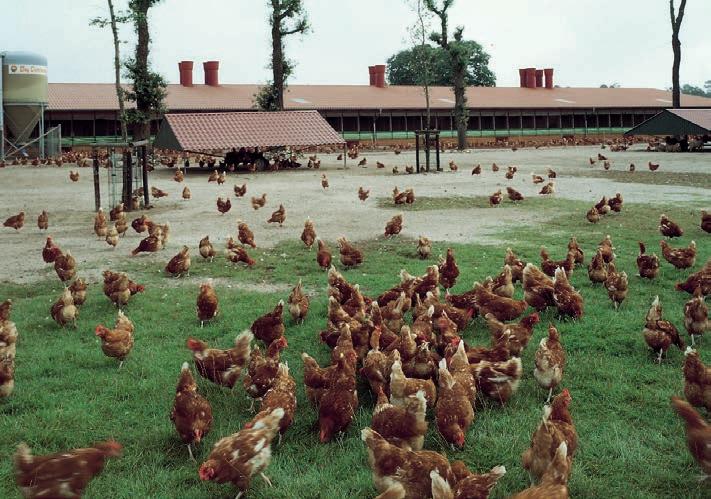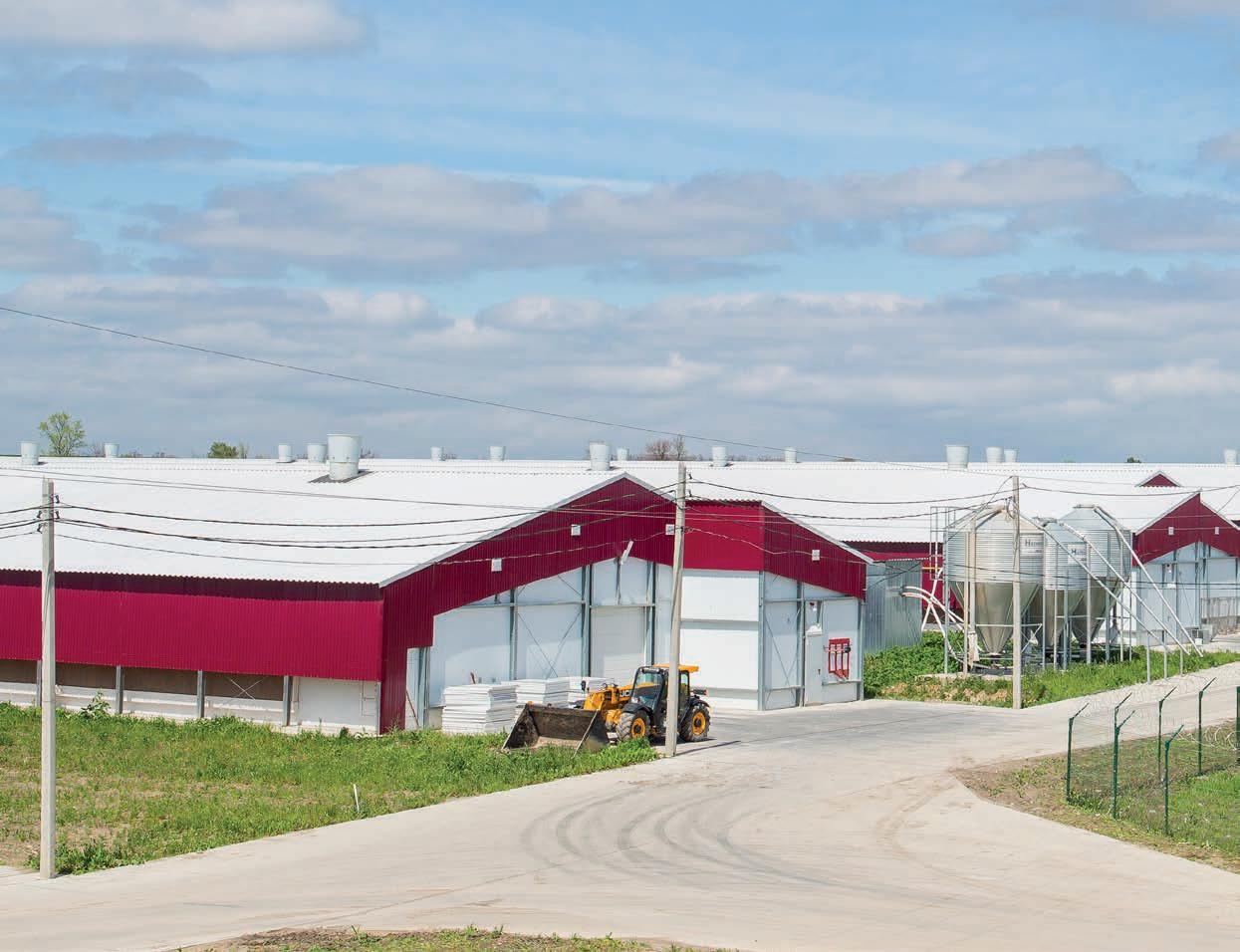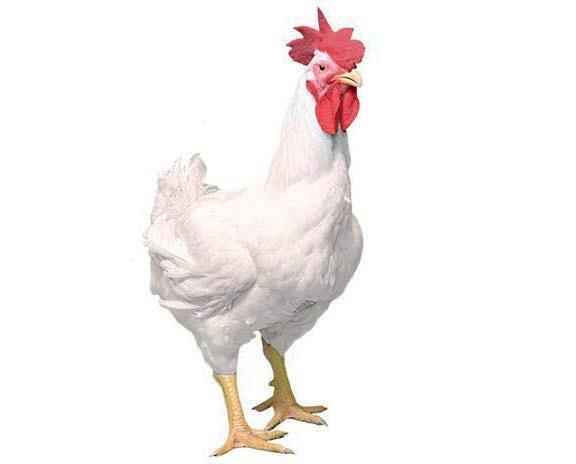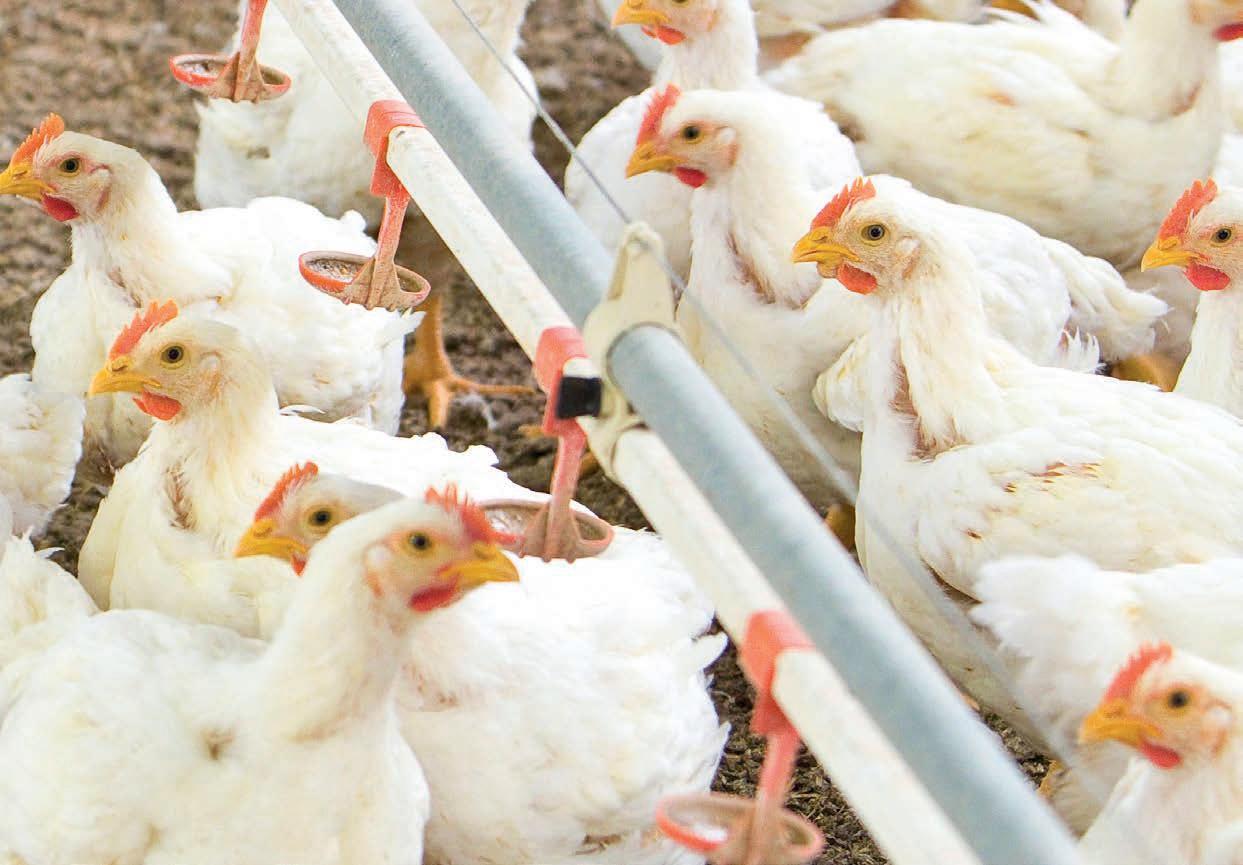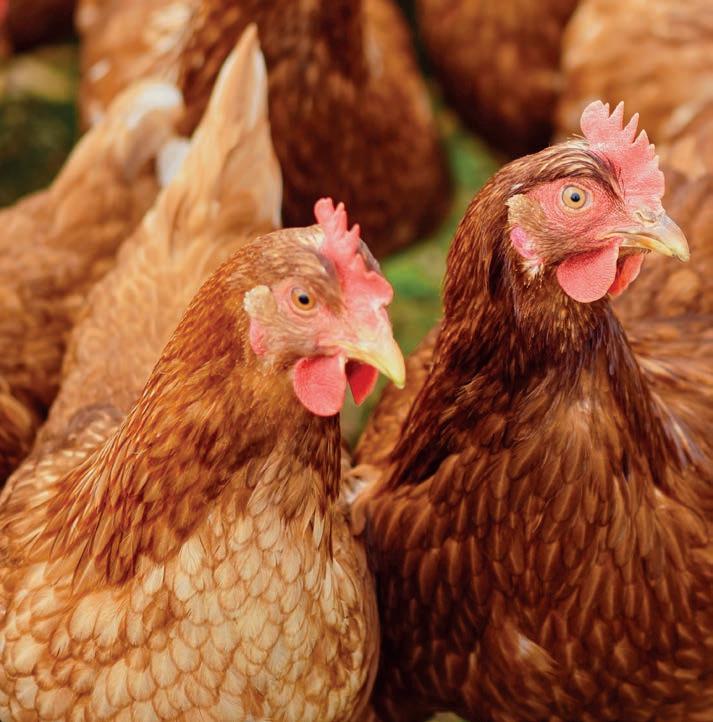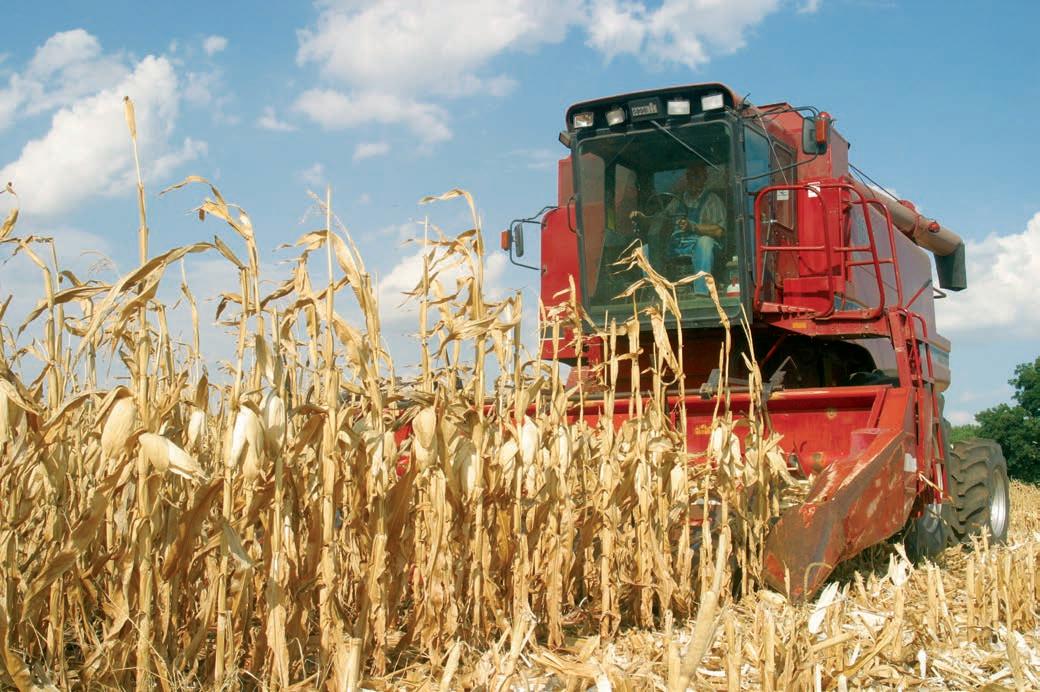
7 minute read
Antimicrobial stewardship. The path to least resistance
Antimicrobial resistance is now accepted as a global public health priority and an important emerging animal health issue. Antimicrobial use contributes to the selection of antimicrobial resistance and consequently only necessary high quality use of antimicrobial agents is considered appropriate.
The Australian meat chicken and egg industries are historically low users of antimicrobial agents and recent surveys of antimicrobial resistance in bacterial commensal species isolated from meat chickens and the environment of laying sheds have revealed very low levels of antimicrobial resistance. Despite this very favourable position the implementation of formal and systematic antimicrobial stewardship plans will support the continued low frequency of antimicrobial use and antimicrobial resistance.
Advertisement
Introduction
Antimicrobial resistance (AMR) is considered one of the biggest threats to human and animal health today and all users of antimicrobial agents have a responsibility to ensure that these agents are only used when necessary.
The Australian poultry industry takes the issue of AMR very seriously and has a long history of developing and introducing initiatives to enhance infection prevention and control and to encourage restriction of antimicrobial use to essential situations. The codes of practice and guidelines introduced progressively since the 1980s have evolved into the antimicrobial stewardship (AMS) plans of the 2000s. AMS and good stewardship practice (GSP) concerns much more than just judicious or prudent use of antimicrobial agents. Indeed the current focus is on continuous improvement and ways to refine, reduce and replace antimicrobial use while maintaining the highest standards of bird health, allowing close alignment with the Australian and global strategies for AMR and antimicrobial use minimisation.
Antimicrobial stewardship
The long history of conservative regulation and use of antimicrobial agents in the Australian poultry industry has resulted in the unique situation where many of the critically important antimicrobial classes used widely in poultry production outside Australia have never been available. For example, the focus of the British Poultry Council (BPC) AMS programme has been the reduction or elimination of the use of fluoroquinolones, third generation cephalosporins and colistin – all antimicrobial classes never approved for use in Australian poultry. Thus Australian AMS programmes can focus on more advanced aspects of stewardship. However, the aims of Australian AMS coincide with those of the British and there is great confluence with the statement of BPC Chairman, John Reed, who concluded after reviewing the 2017 AMS programme that “our farmers and veterinarians need antibiotics in their toolbox to treat sick birds – zero use is not an option – and we will protect the health and welfare of our birds. We will safeguard the efficacy of antibiotics as part of sustainable food production, and we will continue to feed the nation”.
But what is AMS? One of the clearest descriptions is that provided by Guardabassi and Prescott who define AMS as “the multifaceted and dynamic approaches required to sustain the clinical efficacy of antimicrobials by optimizing drug use, choice, dosing, duration, and route of administration, while minimizing the emergence of resistance and other adverse effects”. That AMS is multifaceted means that it is complex and involves many elements and requires clear thinking. The dynamic approach reflects the fact that, just like AMR, AMS is not a stationary practice; it is forever changing and the direction of change, especially that of continuous improvement, is guided by the multifaceted AMS team. Optimising drug use, choice, dosing, duration and route of administration is very challenging as it is inevitably not a fixed and predictable equation, it does not mean ‘one dose suits all’; each circumstance may require a different approach, which may also include no antimicrobial use. Minimising the emergence of AMR is a necessary and demanding goal, but one for which there is insufficient guidance. Only by monitoring responses to treatment or non-treatment and undertaking surveillance of AMR can any insight into resistance minimisation be gleaned.
The 5R framework for AMS was developed to provide a systematic and comprehensive approach to AMS planning, implementation and monitoring to allow a potentially complex process to be both practical and effective. The 5R include Responsibility, Review, Refine, Replace and Reduce. AMS is a continuous process with a goal of defining and applying best practice, AMR minimisation and optimal control of animal health. Good Stewardship Practice (GSP) describes the development, implementation and continuous improvement of the AMS plan (ASP).
The first Australian Veterinary Antimicrobial Stewardship AMS Conference was held in November 2018 and provided a comprehensive overview of the current situation (AVAMS 2018) and initiatives introduced by the various livestock industries as well as actions and plans in companion animal practice.
Antimicrobial resistance
Supported by funding from the Australian Department of Agriculture and Water Resources, the Australian Chicken Meat Federation published the results of a national study of surveillance for AMR in enteric commensals and pathogens in Australian meat chickens. The study was comprehensive and followed international standards for design and analysis. Importantly, it was observed that resistance to antimicrobials considered of critical importance to human health was very low in commensal bacteria from Australian meat chickens – highlighting the effectiveness of past and present AMS initiatives.
Two examples demonstrate the stark contrast in resistance levels in Australia with those elsewhere, for example comparing results from Australia with those from the EU and UK. EFSA & ECDC published the European Union summary report on AMR in zoonotic and indicator bacteria from humans, animals and food in 2016. With respect to campylobacter, for the 3,117 Campylobacter jejuni isolates from broilers reported by 24 member states, the overall observed level of resistance to ciprofloxacin was 66.9% and to nalidixic acid was 61.7%. In the UK ciprofloxacin resistance was reported in 40.6% of C. jejuni isolates from broilers. These results contrast with those observed in the Australian study where only 14.8% of C. jejuni were found to carry ciprofloxacin resistance. This low level of resistance was unexpected and the first report of such resistance in C. jejuni isolated from Australian poultry. Fluoroquinolones (FQ) (the class to which ciprofloxacin belongs) have never been approved for use in Australian livestock including poultry. The finding of FQ resistance is highly unlikely to be the result of FQ use in poultry, rather the appearance of this resistance may ultimately be found to have arisen in humans and subsequently transferred to poultry – highlighting the need for vigilance and the need for biosecurity to encompass poultry workers.
The second example of contrasts between resistances found in Australia and elsewhere relates to Escherichia coli. None of the E. coli isolates from Australian poultry demonstrated resistance to ceftiofur, colistin, florfenicol, chloramphenicol or gentamicin. Two isolates (1%) demonstrated reduced susceptibility to ciprofloxacin but these isolates were not considered clinically resistant. In the UK (VMD, 2017) resistance to the FQ ciprofloxacin was observed in 21.6% of E. coli isolates recovered from caecal contents of healthy broilers at slaughter. In the European Union, EFSA & ECDC reported “for broilers, the highest overall resistance levels observed in the reporting MSs were to the quinolones, i.e. nalidixic acid (59.8%) and ciprofloxacin (64.0%), and to ampicillin (58.0%), sulfamethoxazole (49.9%), tetracycline (47.1%) and trimethoprim (40.7%). Levels of resistance to the third-generation cephalosporins, cefotaxime and ceftazidime, were similar at 4.0% and 3.6%, respectively”. A proof-of-concept AMR study of Salmonella isolates obtained from Australian layer shed environments has also been completed. The susceptibility of 307 isolates collected over the period 2015 to 2018 was assessed against a panel of 16 antimicrobial agents. Overall, a very low frequency of resistance was observed. Remarkably, 295 isolates (96.1%) displayed no evidence of phenotypic resistance to any tested antimicrobial, while 8, 1 and 2 isolates were respectively resistant to 1, 2 or 3 antimicrobial agents.
The enviable status of Australian poultry meat with respect to AMR was supported by the publication of McLellan who found no evidence of acquired multidrug resistance in Gram-negative bacteria isolated from raw chicken drumsticks obtained from 30 retail outlets in Melbourne.
Conclusion
The progressive introduction by the Australian poultry industry over many decades of infection prevention and control measures (including vaccination programmes and biosecurity initiatives), combined with high standards of husbandry, nutrition and environmental controls, and buttressed by a conservative regulatory system that has not permitted the approval in poultry of many antimicrobial agents now considered of critical importance in human medicine (including colistin, fluoroquinolones and 3 rd and 4 th generation cephalosporins), is undoubtedly a significant contributor to the low levels of AMR now evident in isolates from meat chickens and from layer environments. However, complacency is not an option. Continued vigilance reinforced by AMS programs will help protect the rare environment of low AMR, allowing early identification of any changes in resistance status as alerts to investigate risk mitigation measures, or assurance of the effectiveness of production practices.
Acknowledgements: The authors have received funding from Agrifutures to develop an independent AMS verification system for ACM
References are available on request From the Proceedings of 2019 Australian Poultry Science Symposium
S.W. Page, Advanced Veterinary Therapeutics, Newtown, NSW, Australia
D.J. Trott, Australian Centre for Antimicrobial Resistance Ecology, School of Animal and Veterinary Sciences, University of Adelaide, Australia

